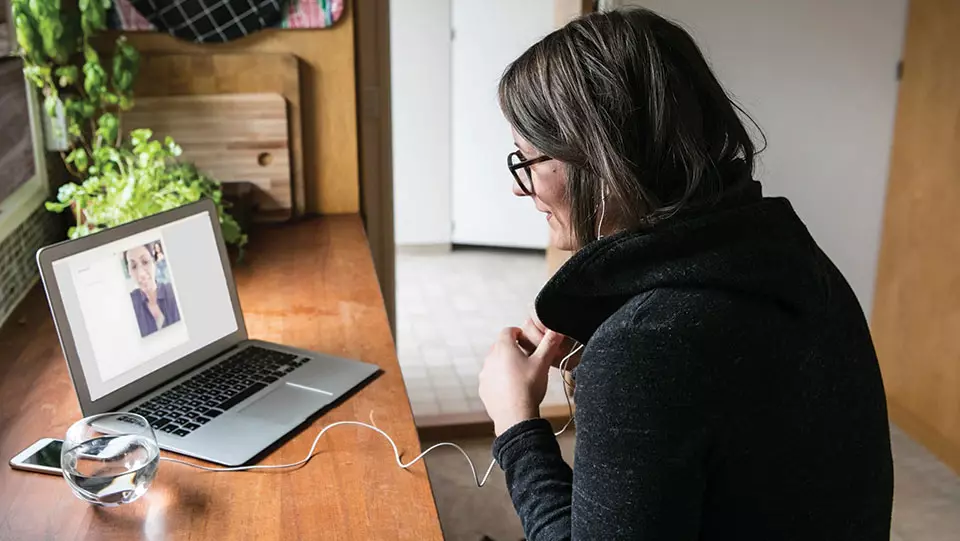Insurtech Trends and Innovations

>>SPEAKER: Many of our customers have a lot of surveillance video data. They’re storing it away for weeks or even months just in case they have some kind of a security event or an incident on their premise. What we’ve realized is with AI they can process that data and really understand some valuable risk insights from the data itself.
With a product like BriefCam you can process 12 hours of video down to about 10 minutes. Every object that traverses the camera’s view gets a time and date stamp and all the attributes are collected about it so it allows you as a customer to search through that video data very quickly and identify things. Let’s say you’ve got some pedestrian foot traffic through an area where we potentially might have a lot of slip trips and falls type losses you can do that type of analysis. It also allows you to do heat maps to understand where people are walking. Maybe they’re taking a shortcut through an area that you had no idea they were using and it’s a really risky area to walk in.
After you’ve analyzed the video you can then take some action. Now we know we’ve got some risky foot traffic or maybe we’ve got some trucks at the loading dock that are going in a certain direction or the fork trucks are traversing in an area that’s somewhat risky where there are employees. You can then take some action and be proactive and begin to put some barriers and some better markings in those areas to ensure your employees are safer.
From artificial intelligence to three-dimensional modeling, risk managers are increasingly incorporating technology into their strategies to protect their business, while Claim professionals are using it to provide assessments after a claim. Insurtech can help companies interpret the vast amount of data that they amass daily, provide timely information and help them to understand and reduce potential risks.
Here are two examples of insurance technology innovations.
Video analytics
Companies have long used video cameras to record footage for security purposes, but it has historically been lower quality and time-consuming to review. BriefCam offers a video AI software solution that helps analyze trends in data collected on video and zero in on a specific incident.
The solution allows customers to leverage surveillance video they already own and are storing but may not have been able to fully evaluate because of the considerable amount of video to sort through. By uploading hours of surveillance video into BriefCam, through capabilities like enhanced search, review and facial recognition, users can gain timely new insights that can help them identify relevant safety issues.
From a security camera to a risk analysis tool
“The technology is making use of data that companies already have,” said John Lippe, a Travelers Risk Control professional. “The evolution of AI is going to continue to strengthen the potential for video analysis, making it even timelier and faster.”
For example, a facilities manager could view time-lapse video that condenses 100 hours of video into 10 minutes and show a heat map of employees entering and exiting the building. After determining their primary traffic patterns, those areas could be prioritized for risk mitigation measures like clearing snow and ice to reduce the likelihood of slips, trips and falls.
Video analytics can also help quickly show if employees are following safety procedures, such as only reviewing employees over different shifts to see if employees are using correct lifting practices for a task that has created injuries. The insights gathered can inform updates to safety guidelines and procedures to help improve safety and reduce injuries and losses.
The video data can be condensed into a video synopsis that is searchable by source, time range, vehicle types and attributes of people. Facial recognition software allows for image recognition and the videos can show size, speed and direction.
Smart property damage analysis
Assessing property damage in person can involve risky conditions for claims professionals. With as few as eight mobile phone photos, the HOVER app creates three-dimensional (3-D) models that can help reduce the need to walk through potentially dangerous sites where property damage occurred. HOVER’s technology transforms smartphone photos of any property into an accurate 3-D model, gathering precise measurements of a building’s exterior, siding and windows.
Travelers Claim professionals use HOVER to more easily inspect property damage, and customers can use HOVER to submit their information without having to schedule an on-site inspection.
“Our focus is always on getting our customers’ lives back to normal as quickly as possible after a loss, and we’re continuously looking for new ways to enhance their experience with us,” said Pat Gee, Senior Vice President, Auto and Property Claim, Personal Insurance Claim, at Travelers. HOVER’s technology can provide an easier claim process for customers and a safer environment for employees.
Travelers began a pilot program with HOVER in April 2018 and has conducted more than 100,000 inspections with the technology, for both personal and business insurance customers.



